According to Al Jazeera , after Israel launched a ground operation into Gaza and cut the narrow strip of land into two parts, north and south, they faced a big challenge that could take a long time to deal with: Hamas tunnels.
Observers say the tunnels Israel destroyed yesterday were just a small part of a system stretching hundreds of kilometers that Hamas built over many years.
Experts also warn that Israel could face heavy casualties when it begins to accelerate the movement of personnel into the narrow, trap-filled routes of Hamas. Therefore, Israel will need to have methodical tactics to minimize risks.
Find the entrance and map the tunnel
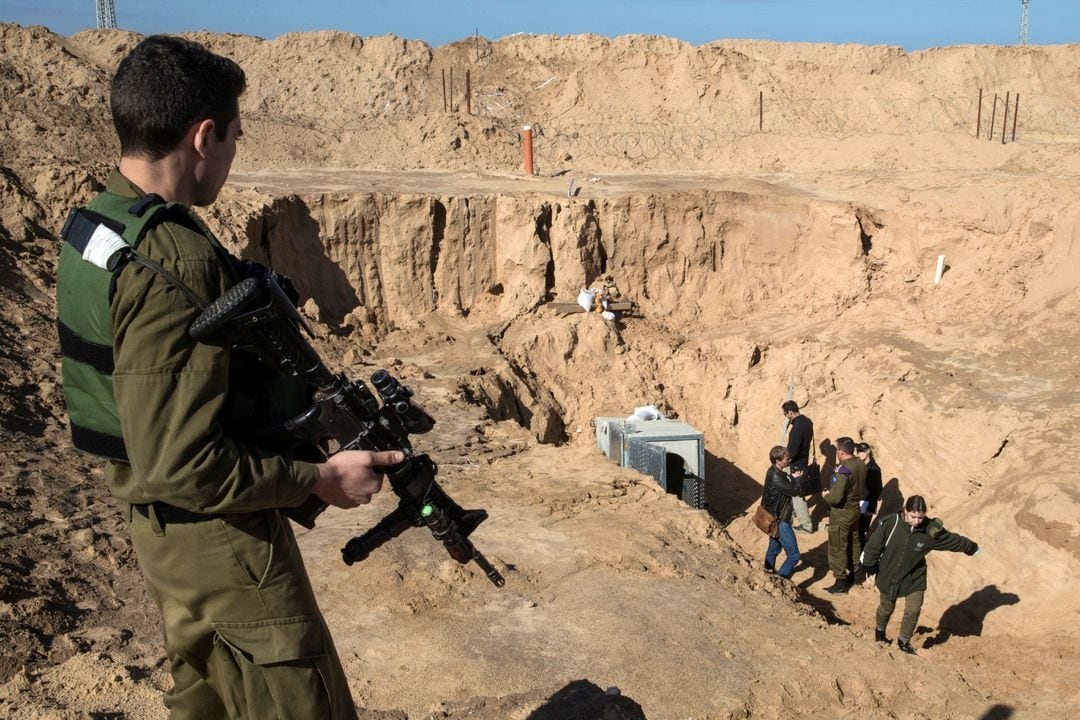
Israeli soldiers stand at the entrance to a Hamas bunker (Photo: Reuters).
To gain a fighting position in the bunkers, Israel needed to identify as many entrances as possible. For a system believed to be as long as 500km, the number of entrances could be in the tens of thousands.
Most of the entrances are hidden inside buildings, garages, industrial facilities, warehouses, under landfills and even under rubble from a month of Israeli airstrikes on Gaza.
However, Israel appears to have been preparing for underground operations since 2014. Israel has continuous surveillance technology using UAVs, using software to analyze movements, recognize faces and compare them with a database of Hamas members that Tel Aviv has identified.
This technology appears to have helped Israel detect hundreds, even thousands, of entrances to underground tunnels.
In addition, Israel also has a fairly effective intelligence network and they may have sources of information to share suspected locations of Hamas tunnel entrances with Tel Aviv.
Knowing the entrance is helpful, but it does not guarantee that if attacked, the tunnel will be useless to Hamas. A tunnel has many entrances and exits, so mapping these routes is essential.
The tunnel builders, Hamas, have a huge advantage because they know the network so well. The Israeli software can suggest that two entrances connect, but it cannot reveal routes, directions, or reveal hidden paths.
To map the tunnels with precision, Israeli commandos had to go inside, facing significant threats. First, it was technical: GPS tracking devices were useless because satellite signals could not penetrate underground.
Israel will likely use devices that combine magnetic sensors, which are unaffected by underground travel, with motion sensors like those used in pedometers. It's a crude and imprecise system, but it's better than nothing.
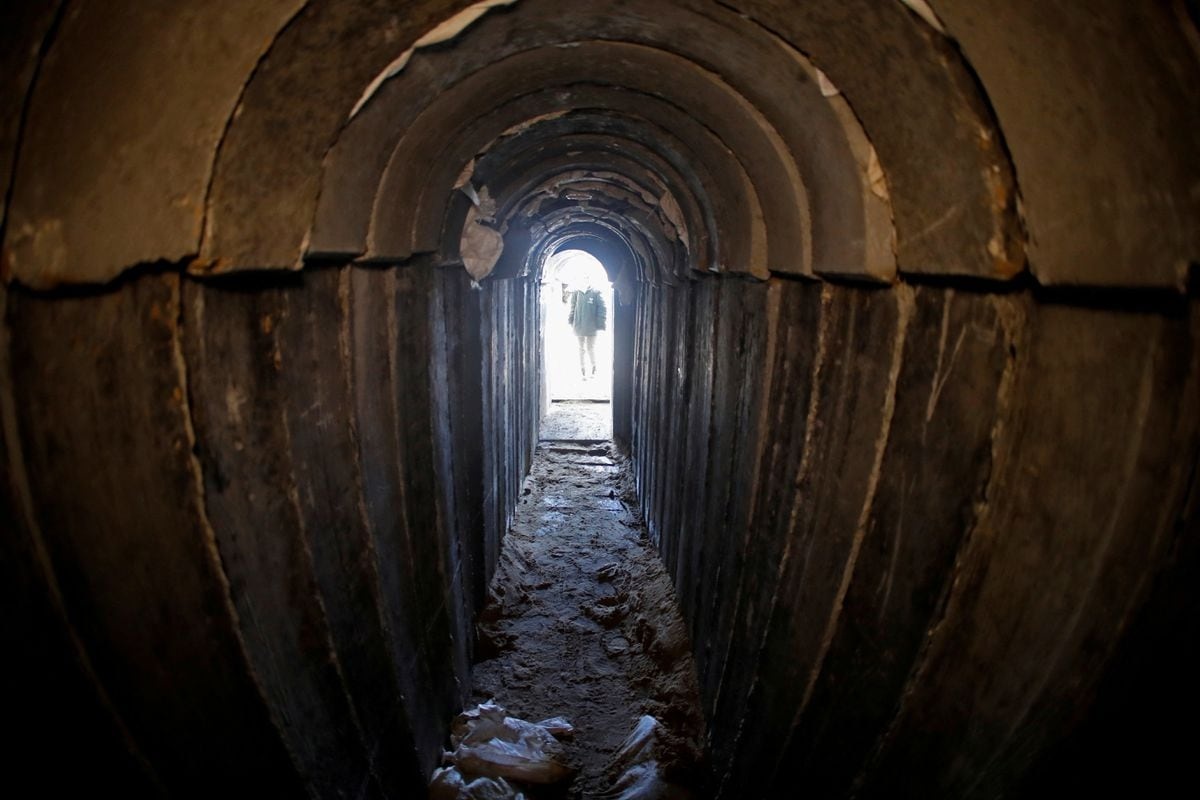
A Hamas tunnel (Photo: Reuters).
In addition, according to Forbes , Israel is also said to have UAV technology that allows it to operate underground. This technology can solve difficult problems: Underground structures are full of obstacles and are prone to collisions that can break propellers, rendering UAVs ineffective. In addition, UAVs often rely on GPS or satellites for navigation, and underground signals can be ineffective.
The first problem can be solved with anti-collision sensors and propellers placed in protective cages. The other problem can be solved with SLAM (Side-by-Side Localization and Mapping) technology.
Israeli company Elbit Systems has developed a system called Legion-X that can flexibly share data between multiple unmanned devices such as robots, underground UAVs. Legion-X can integrate Lanius UAV - a line of devices specially designed to operate indoors and underground.
The Lanius is a small quadcopter with combined search and attack capabilities. It is equipped with take-off sensors and carries a grenade-sized explosive charge, making it a UAV that can loiter in confined spaces and strike when necessary.
Zachary Kallenborn, an expert at the Center for Strategic and International Studies, commented: "Elbit claims that the Legion-X is designed for underground operations. The question is whether the communication and positioning systems are effective underground?"
The underground survival war
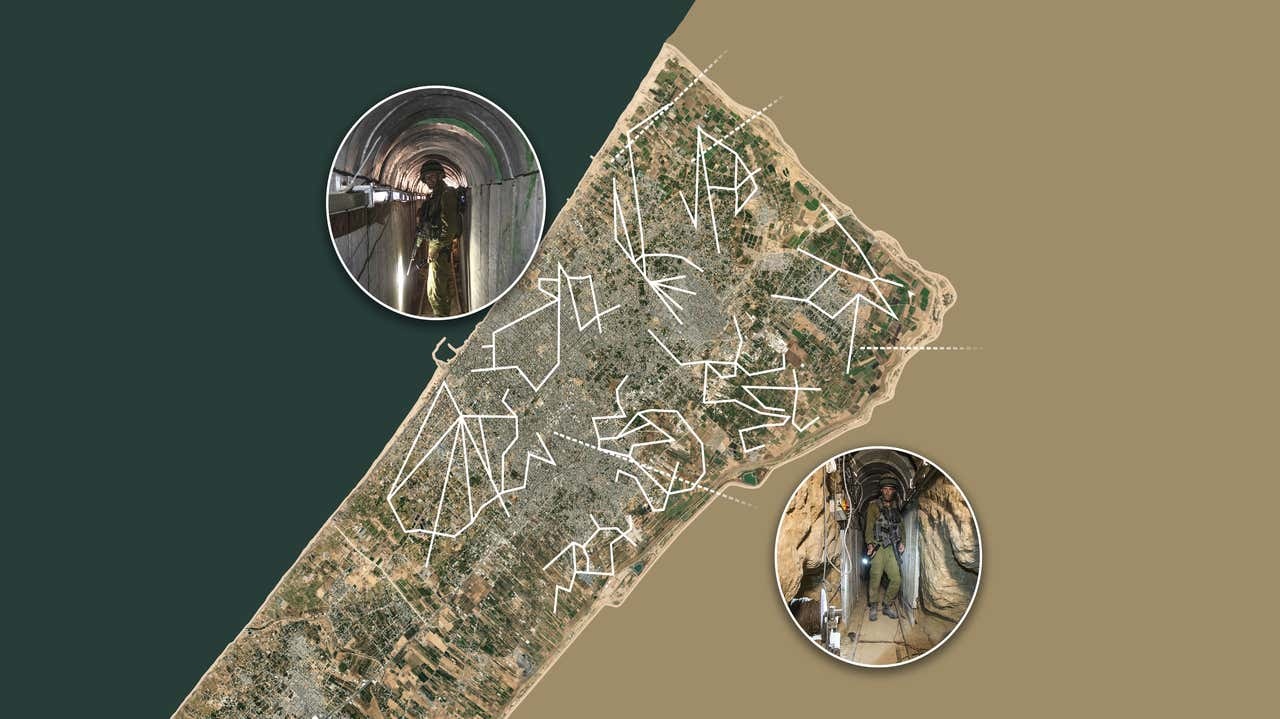
Illustration of Hamas's underground tunnel system (Photo: USA Today).
Although Israel possesses modern technology, applying it in a large-scale war like underground Gaza is a different story. Therefore, according to experts, Israel may have no choice but to send commandos and agents underground to carry out exploration and combat missions.
After entering the bunker, Israeli agents will have to operate with night vision goggles instead of flashlights due to the risk of revealing their fighting position. Because they cannot use radio signals to communicate, Israeli soldiers will have to communicate with units on the ground using battlefield telephones, technology that is more than 100 years old.
The soldiers would have to carry coils of wire to ensure they remained connected, which would have made them slower and less agile. Even if they did not encounter Hamas resistance, they would have to stop at every junction and assess where the tunnel branches would lead.
A small force would have to be positioned on each side of the tunnel to defend against counterattacks. Whenever they found a vertical shaft, which was almost always used as an entrance, they would have to pause, map the location, and relay it back to the units on the ground.

Cross section of an underground tunnel (Graphic: USA Today).
The ground unit would have to quickly locate that entrance and secure it so that Hamas members could not enter it and attack the Israeli soldiers making their way below. If they could not secure it, the ground troops would alert their comrades below to go around it, or abort the mission.
This process can be repeated hundreds of times, with intense stress, causing psychological pressure on Israeli soldiers.
Israel, a country with a modern military , owns robots that can move underground. They can act as a vanguard, detecting threats and traps. However, the robots' major limitation is that they cannot climb stairs or overcome obstacles that are too large.
All the elaborate preparations by Israel mentioned above have one sole purpose: to ensure that there are no enemies in the tunnels. However, this is unrealistic because Hamas is certainly well prepared.
Most of the tunnels were likely booby-trapped with improvised explosive devices (IEDs). These could be wired to remote detonators, but they could also be triggered by specialized detonators with sensors that respond to light, vibration, noise, movement, and even increased CO2 levels in the presence of humans.
The tunnels are connected by wires and cables that carry electricity, internet, telephone and military communications lines. Hamas may have surveillance and detection equipment that allows them to know where the Israelis are so they can remotely detonate bombs at that exact location.
Israeli agents could not simply cut all the wires because that would have triggered some of the detonators. Explosions in tunnels were much more dangerous than above ground, as they could have sucked out all the oxygen, leaving survivors at risk of suffocation.
Additionally, Hamas can also burn flammable compounds to reduce oxygen or create toxic smoke that drifts below. This tactic helps Hamas preserve the tunnels from being destroyed after forcing the enemy to retreat due to suffocation.
Israeli commandos would certainly be equipped with breathing apparatus, but wearing bulky masks and oxygen tanks makes communication and fighting more difficult in cramped conditions.
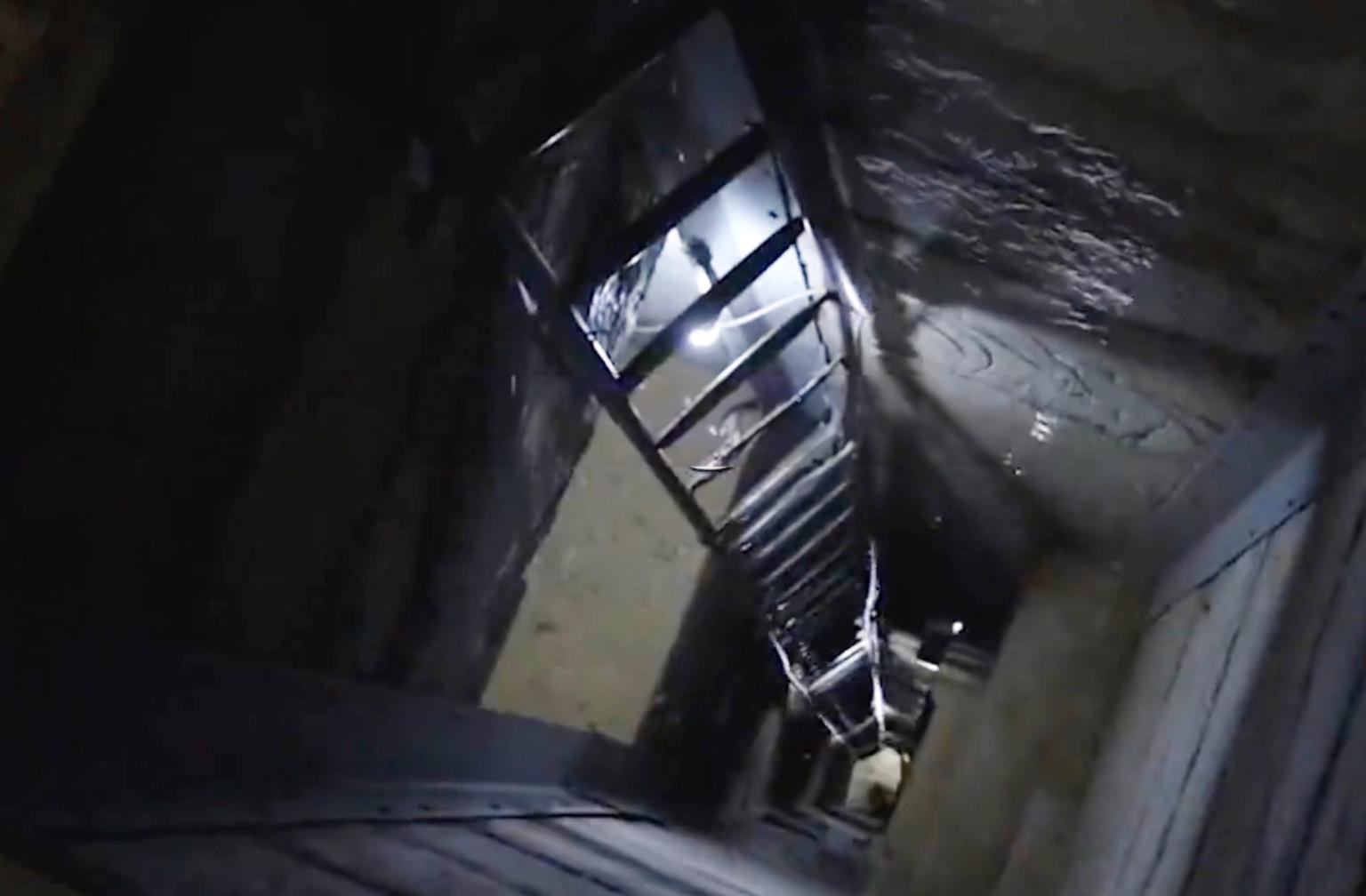
Some of Hamas's tunnels are located deep underground, forming many floors (Photo: Reuters).
To increase the chances of a successful fight, the Israeli agents' mission will likely be to push the Hamas members to the surface, as fighting underground will be much more difficult.
Israeli command knows that their technological and weapons advantage on the ground is significantly higher than underground, so they want Hamas out at all costs.
To do so, Israel could use chemical agents such as tear gas, some of which have a long-lasting effect in the narrow tunnels. If Hamas does not have adequate protective gear for its underground members, Israel's tactics could be effective.
Water is also a way to force Hamas out. Some experts have talked about the possibility of Israel flooding the tunnels to force them out.
In a scenario where Hamas cannot be forced out, Israel must prepare for underground fighting, which is a huge challenge. The tunnels are too narrow to accommodate large weapons.
If using light weapons, pistols for combat, when firing, the flash can affect the Israeli commandos' vision, especially when they are wearing night vision goggles. Therefore, it is likely that Israeli commandos will carry smaller caliber weapons with sound suppressors, not only to reduce noise but also to prevent the flash at the muzzle.
No matter which gun is chosen, the commandos in the tunnel will have limited firepower because only two can fire at once, one kneeling, the other standing above them.
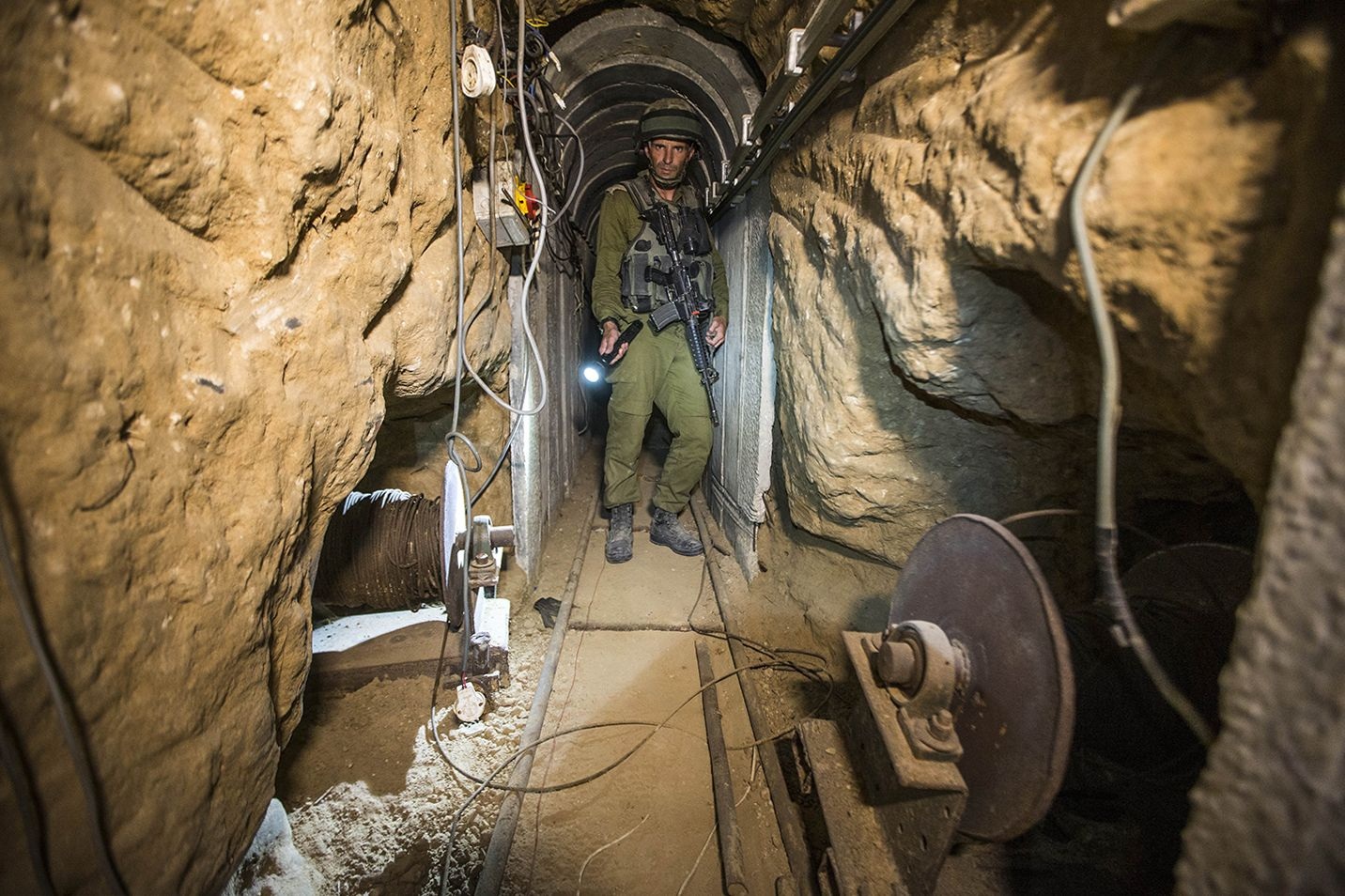
The total length of the underground tunnels built by Hamas is said to be up to 500km (Photo: Reuters).
Hand grenades and rifles have almost certainly been eliminated in tunnel warfare. Flash grenades can be effective by temporarily blinding Hamas, but they are still risky because they can endanger Israeli soldiers themselves.
Additionally, Israeli commandos will likely carry combat knives as close combat is highly likely to occur.
There has been much discussion about using sniffer dogs in tunnels, but expert Zoran Kusovac believes this is not a good idea, as dogs can become unpredictable in terms of behavior when operating in quite extreme conditions such as tunnels.
They can become uncontrollable because of a flash of light in a dark space, or the noise of gunfire in a confined space.
Destroy the tunnel
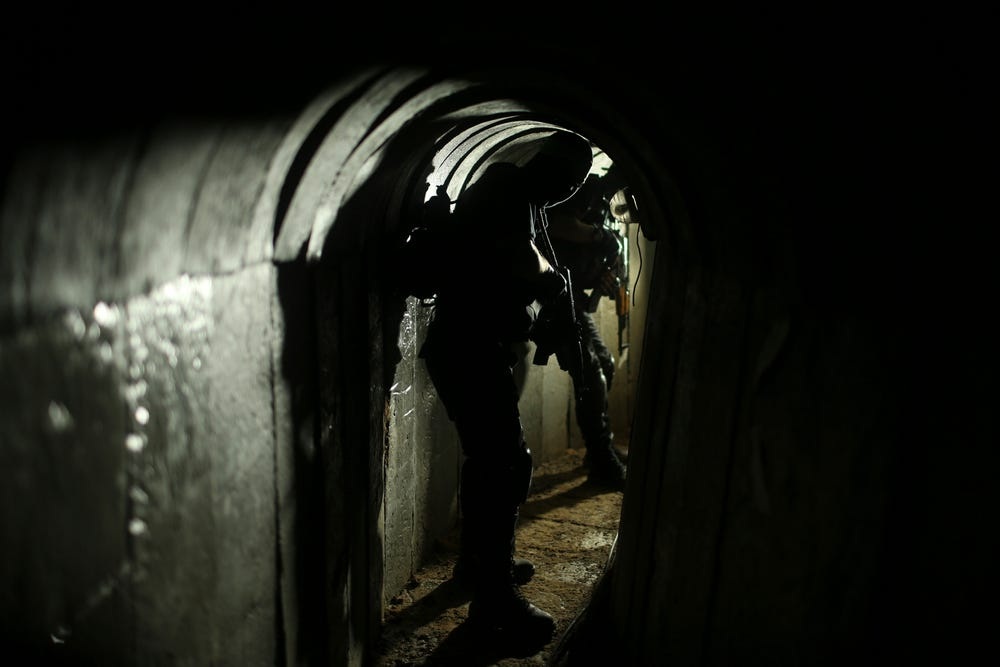
Tunnel warfare is one of the biggest challenges for Israel because they cannot maximize their superiority in weapons technology over Hamas (Photo: Reuters).
Hamas desperately needs tunnels to operate, so Israel will want to destroy as many of its enemy's routes as possible to neutralize them. Israeli combat engineers say they are testing a "sponge bomb", a device containing two chemicals that create a foam.
This is a bomb that does not contain explosives but is used to seal gaps or tunnel entrances where soldiers might emerge.
The "sponge bomb" is contained in a plastic box, with a metal wall separating the two liquids. When this wall is opened, the compounds mix together, creating a reaction that forms foam, which expands rapidly and then solidifies, sealing off a space.
The idea behind the technology is to create plugs in the tunnels, blocking Hamas's intricate pathways from the inside, rather than just blocking the entrances.
Israel also wants to destroy Hamas bunkers from within with explosives, although this is not an easy task. They cannot simply place explosives in the bunker and wait for it to collapse. To be effective, Israeli commandos may need to dig a hole in the bunker, place explosives and then detonate them to collapse the structure.
Experts warn that the underground war will be a tense battle for survival, and Israel may have to spend months and accept a scenario of great losses to hope to achieve its objective. However, there is no certainty that with 500km of tunnels, complete destruction is truly a huge task.
According to Al Jazeera, Forbes, USA Today
Source




![[Photo] Draft documents of the 14th Party Congress reach people at the Commune Cultural Post Offices](https://vphoto.vietnam.vn/thumb/1200x675/vietnam/resource/IMAGE/2025/10/28/1761642182616_du-thao-tai-tinh-hung-yen-4070-5235-jpg.webp)

![[Photo] National Assembly Chairman Tran Thanh Man received a delegation of the Social Democratic Party of Germany](https://vphoto.vietnam.vn/thumb/1200x675/vietnam/resource/IMAGE/2025/10/28/1761652150406_ndo_br_cover-3345-jpg.webp)
![[Photo] Flooding on the right side of the gate, entrance to Hue Citadel](https://vphoto.vietnam.vn/thumb/1200x675/vietnam/resource/IMAGE/2025/10/28/1761660788143_ndo_br_gen-h-z7165069467254-74c71c36d0cb396744b678cec80552f0-2-jpg.webp)



























![[Photo] President Luong Cuong attends the 80th Anniversary of the Traditional Day of the Armed Forces of Military Region 3](https://vphoto.vietnam.vn/thumb/1200x675/vietnam/resource/IMAGE/2025/10/28/1761635584312_ndo_br_1-jpg.webp)









































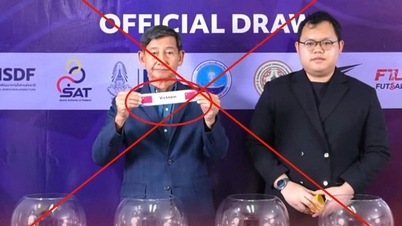








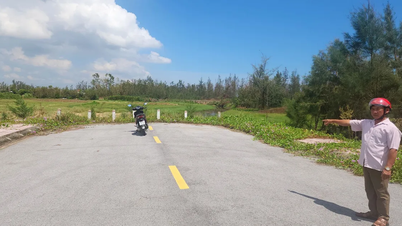







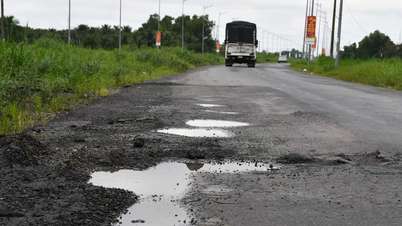
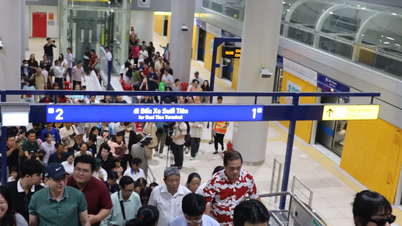















Comment (0)